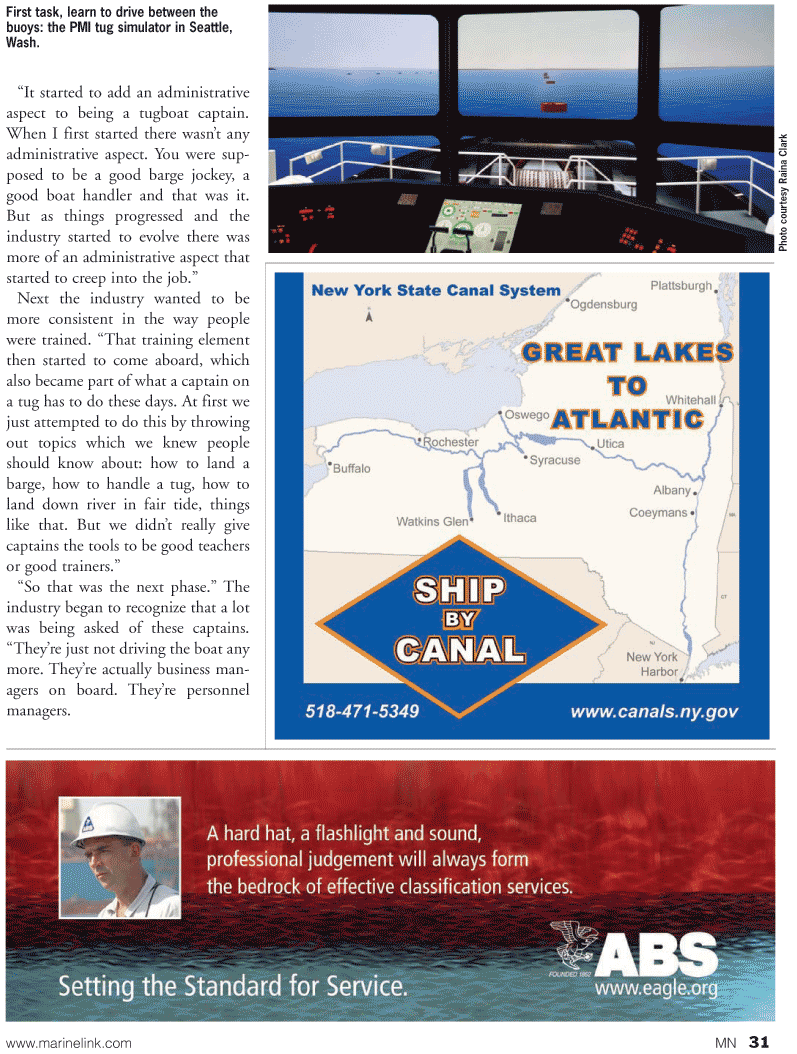
Page 31: of Marine News Magazine (March 2011)
Marine Training & Education Edition
Read this page in Pdf, Flash or Html5 edition of March 2011 Marine News Magazine
“It started to add an administrative aspect to being a tugboat captain.
When I first started there wasn’t any administrative aspect. You were sup- posed to be a good barge jockey, a good boat handler and that was it.
But as things progressed and the industry started to evolve there was more of an administrative aspect that started to creep into the job.”
Next the industry wanted to be more consistent in the way people were trained. “That training element then started to come aboard, which also became part of what a captain on a tug has to do these days. At first we just attempted to do this by throwing out topics which we knew people should know about: how to land a barge, how to handle a tug, how to land down river in fair tide, things like that. But we didn’t really give captains the tools to be good teachers or good trainers.” “So that was the next phase.” The industry began to recognize that a lot was being asked of these captains. “They’re just not driving the boat any more. They’re actually business man- agers on board. They’re personnel managers. www.marinelink.com MN 31
First task, learn to drive between the buoys: the PMI tug simulator in Seattle,
Wash.
Photo cour tesy Raina Clark

 30
30

 32
32
